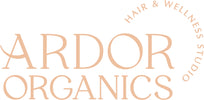Preservatives are not the bad guys. We need them in our products to prolong shelf life by warding off pathogens and undesirable chemical changes. Without preservatives, our shampoo can easily spoil and lead to irritation or infection. It can be hard to know which preservatives are bad and which are not-so. A few sure-fire ways to seek healthier alternatives is to shop organic, avoid parabens, and consider investigating your shampoos and conditioners.
There can be a lot of long jargon-like names that are hard to remember, which is why an effective way to avoid nasty preservatives is to shop organic. Big warehouse-brands need their products to last longer, so they up their percentage of preservatives and use a myriad of stronger and potentially harmful concoctions. Organic products are run in smaller batches with a shorter shelf life – which is good. These preservatives are less prevalent in your products and are plant-based.
When looking out for nasty preservatives, here are two common types to be mindful of:
-
Parabens; a synthetic used as a preservative in the majority of self-care products. As breast cancer rises around the world, so do the studies into what factors could be causing it. We’re seeing hundreds of environmental chemicals being found in breast tissue, with parabens being a frequent contender. After much public debate, many companies are going paraben-free.
Whilst the evidence is inconclusive as to whether parabens cause breast cancer, as endocrine disruptors, they are known to mess with your hormones. We don’t want that kind of imbalanced behaviour in our bodies, so parabens are best avoided.
-
Formaldehyde-releasing preservatives; Formaldehyde is a strong smelling gas found in many personal products, especially shampoos. When found in our air at high doses, it can be harmful on our health. As a known irritant, it can burn the eyes and throat and trigger dermatitis. It’s also been liked to triggering cancer in rats, which is never a positive sign. The most common preservative that releases formaldehyde is quaternium-15 – this is a good name to start with.
Liquid products, like shampoos and conditioners, need the most preservatives. So when considering making one change, switch these out for heathier alternatives, preferably organic. Then on the other hand, oil based products such as certain shampoo bars or natural serums need the least additives and at times, none.
There are many preservatives provided by nature that are used in natural products. From herb oils, to vinegar, to handy compounds with antimicrobial properties. If you see the following additives pop up, it’s a good sign:
- Glyceryl Caprylate; produced using only plants, they ward off microbes and help balance out the environment of the skin.
- Sodium levulinate and sodium anisate; preservatives derived from corn and fennel. Bees also use these to help preserve their pollen and nectar against spoilage.
There are so many preservatives both in the toxic and natural world it can be hard to know where to start. Just knowing there’s a difference is a step toward a more conscious use of your products. If nothing else, your safest bet is to stick with hair care that’s organic!
By Gemma Innes in collaboration with writer Sian Henderson





